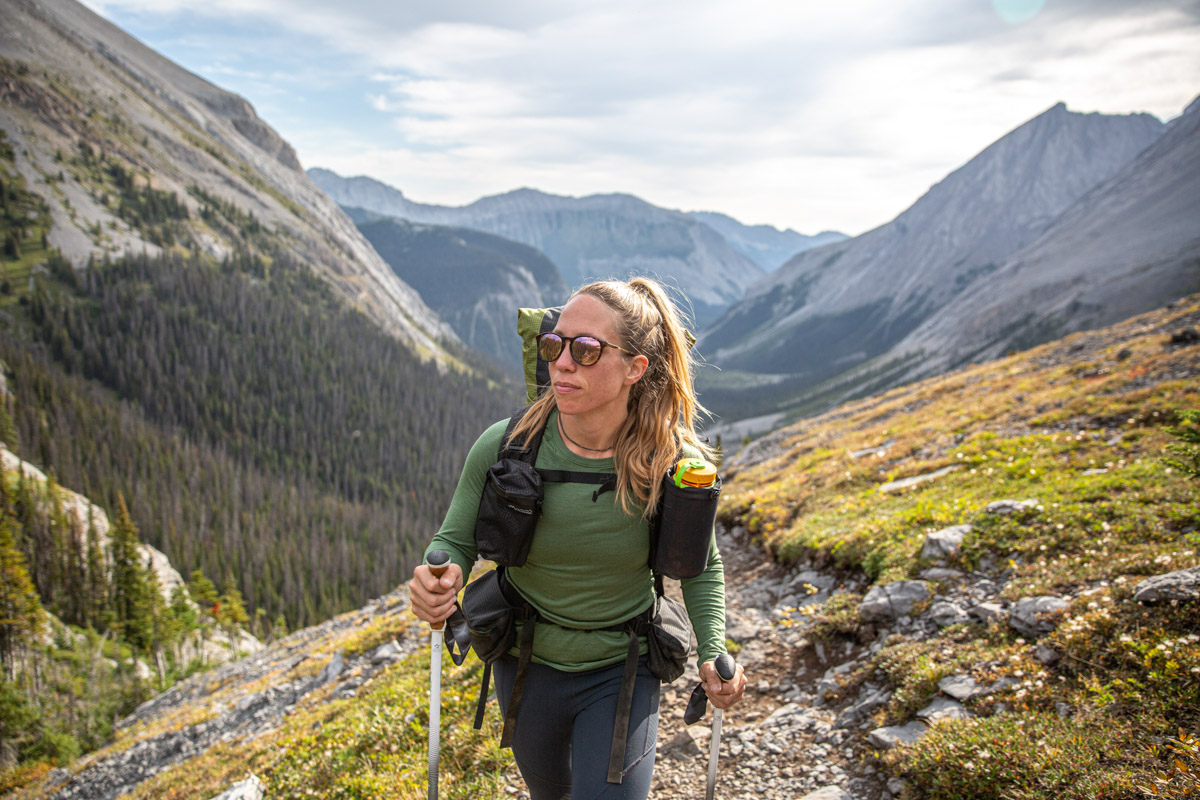
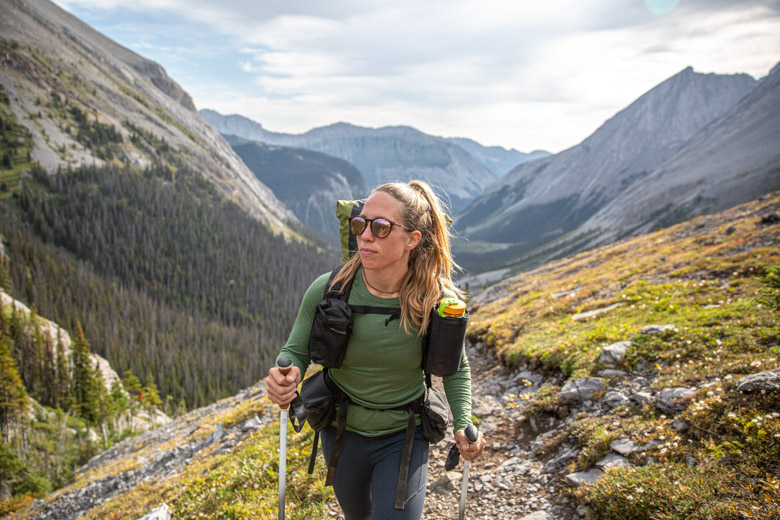
Price: $90
Materials: 88% merino wool, 12% nylon
Category: Lightweight
Weight: 5.4 oz. (women's)
What we like: Versatile for everything from shoulder-season backpacking to cross-country skiing.
What we don’t: Requires added care to keep nice; some of the lighter colorways are a bit see-through.
See the Women's Classic All-Season See the Men's Classic All-Season
Smartwool is an irrefutable leader in the baselayer market, and their Classic series sits at the helm. I recently tested the Classic All-Season—arguably the most versatile option in the collection—on a backpacking trip in the Canadian Rockies. Right away, the shirt impressed me with its soft feel, flattering fit, and solid breathability for everything from shoulder-season hiking to mid-winter running. The mostly wool construction requires care to last, and some of the lighter colorways are slightly see-through, but overall, this is a great year-round piece that nicely complements any outdoor wardrobe. Below is an in-depth look at my experience with the Classic All-Season Merino Base Layer Long Sleeve. To see how it stacks up to the competition, check out our articles on the best baselayers and best women’s baselayers.
Featuring 150-gram (g/m²) merino wool mixed with just a small amount (12%) of nylon, the Smartwool Classic All-Season Merino Base Layer is on the thinner end of the baselayer spectrum. For reference, it’s noticeably less thick than Smartwool’s own Classic Thermal, which uses 250g/m² merino. The Classic Thermal is much warmer as a result, making it the better choice for mid-winter activities like downhill skiing. By comparison, the Classic All-Season is a great match for shoulder-season hiking, as well as more intensive winter pursuits like cross-country skiing or cold-weather running.
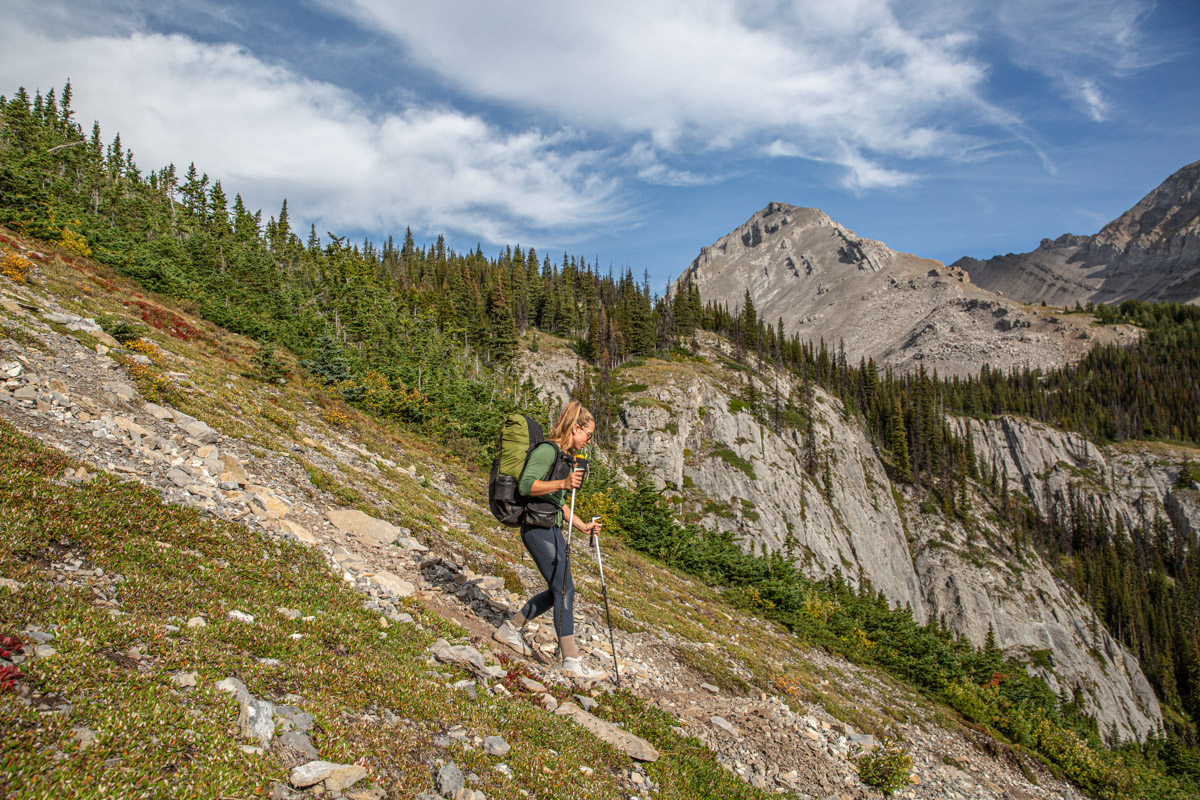
I wore the Classic All-Season on a late-summer backpacking trip in the Canadian Rockies and found it to be just about perfect. While temperatures were pretty warm during our visit, reaching into the 70s Fahrenheit during the heat of the day, mornings and evenings were brisk. During these cooler periods, I paired the Classic All-Season with either a lightweight fleece or a warm synthetic jacket, depending on the temperature. The Smartwool’s snug fit was great for both layering and warmth retention, and I even wore the shirt to bed a couple of nights since it was so cozy.
While all-synthetic baselayers often beat out wool designs in terms of breathability, I found the Classic All-Season to be a respectable performer. The mostly merino construction and slim fit make it effective at wicking moisture, while the thin build allows for great airflow in cool to moderate temperatures. Another benefit of the shirt’s mostly wool construction is that it resists odor to an impressive degree. For reference, I’ve been able to get multiple wears out of the Classic All-Season between washes, which I can’t say for any of my synthetic baselayers. It dries quickly, too, which is a great feature for travelers, long-distance backpackers, and others who might need to get creative with washing and drying their garments.
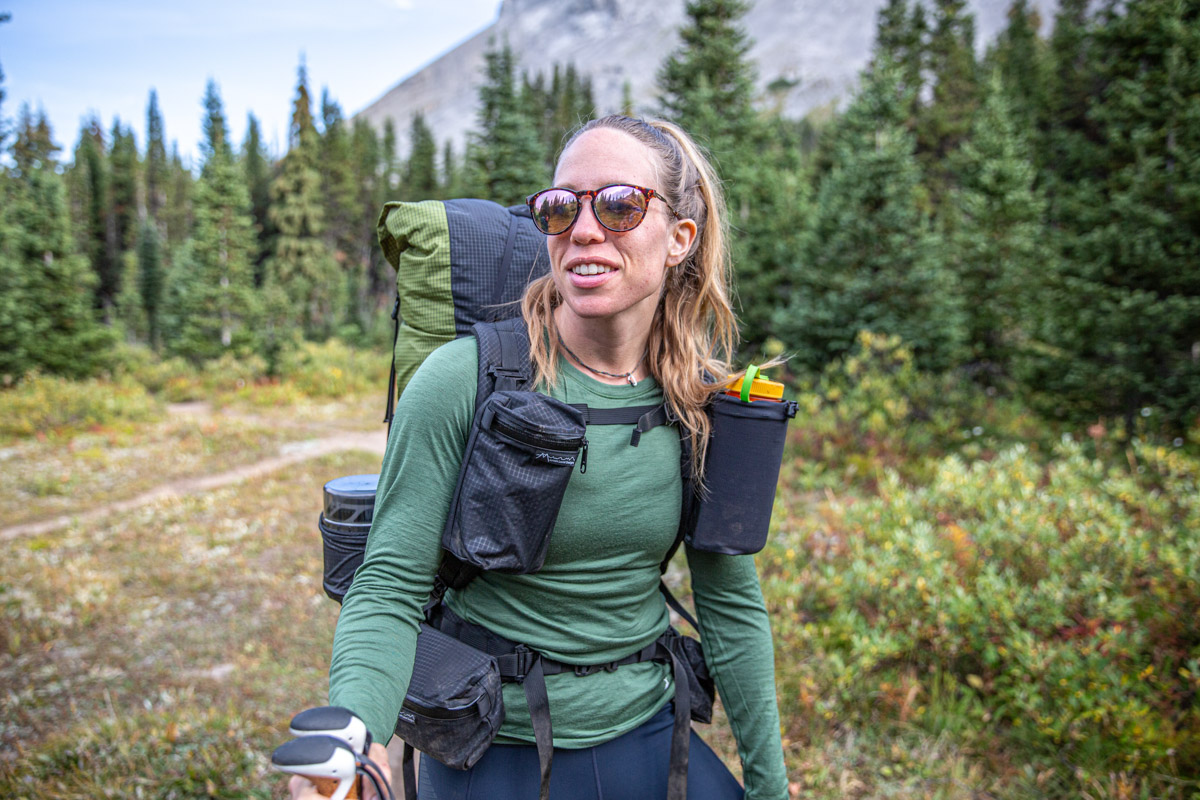
The Classic All-Season is an easy-to-wear piece, whether you’re hiking or enjoying a post-adventure meal in town. The mostly merino build is very soft against the skin, and the small amount of nylon helps boost stretch and mobility. Smartwool also included raglan sleeves that omit seams along the shoulders—great for maximizing comfort underneath backpack straps. For reference, I’ve had no issues performing mobility-dependent tasks like pitching a tent, reaching overhead into a roof box, or scrambling around on rocks. The shirt is even comfortable enough to wear casually, and I expect it to be a staple in my daily wardrobe this fall.

Despite the addition of nylon, the Classic All-Season’s lightweight construction makes it more susceptible to early breakdown than thicker alternatives, like Smartwool’s Classic Thermal. In particular, I expect high-wear areas, such as the cuffs and shoulders, to deteriorate relatively quickly. You can help maximize the shirt’s lifespan by following Smartwool’s care instructions (don’t regularly throw it in the dryer, for instance), but this is a largely unavoidable downside of thin merino baselayers. On a related note, it’s worth mentioning that some of the lighter colorways (including the Light Gray Heather) are a bit see-through. If this is a concern, I recommend opting for a darker color.
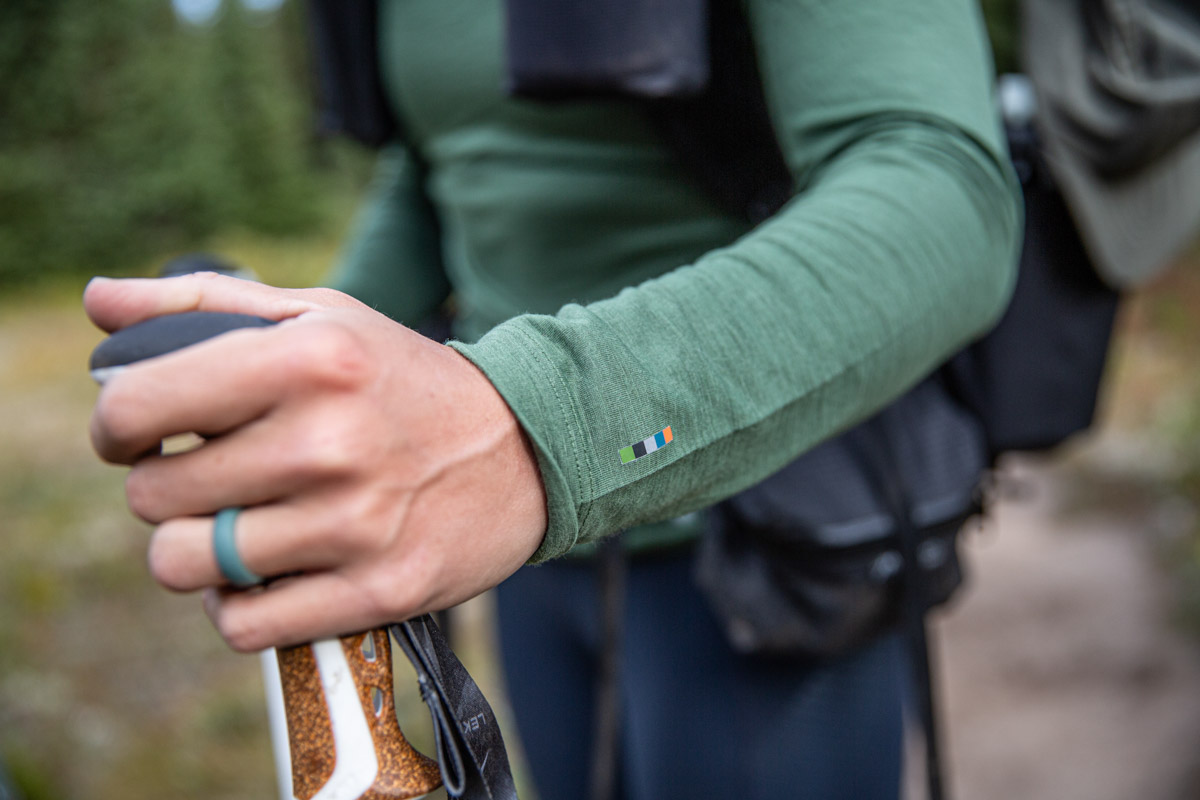
To be fair, my shirt is in excellent condition with no signs of wear after about a month of consistent use both outdoors and around town. The addition of nylon certainly helps, offering a boost in longevity and tear resistance compared to all-merino alternatives. Finally, it’s hard to deny Smartwool’s build quality: All of the stitching on my shirt is clean and intentional, the logos are subtle, and the fit is very flattering.
I went with my usual women’s size small in the Classic All-Season and enjoyed the snug but not restrictive fit. Dubbed a “slim” fit by Smartwool, the shirt is easy to layer underneath a jacket or vest, and it’s also flattering to wear on its own. As I mentioned above, the small dose of nylon adds a nice boost in stretch and mobility, making it easy to move around comfortably. I do wish the sleeves were a little longer for tucking cold hands into while hiking, but they offer sufficient wrist coverage. Finally, it’s worth noting that the Classic All-Season is offered in straight sizes from XS to XL, as well as plus sizes from 1X to 4X, which is a healthy range that should accommodate a wide variety of body sizes and shapes.

Due to their natural fibers, wool baselayers are more eco-friendly than synthetic baselayers (which use petroleum and plastics). The 12% of nylon that Smartwool adds to the otherwise fully merino wool Classic All-Season is fully recycled. Furthermore, Smartwool sources their wool from ZQ-certified flocks, which ensures proper animal welfare and sustainable sourcing (you can read more about their wool on their site). Finally, one of the best ways you can keep your baselayers out of the landfill longer is by practicing proper laundering, which includes using gentle wash cycles, mild soap, and air drying.
I tested the Classic All-Season Long Sleeve for this review, which has a standard crewneck style. Smartwool also offers the design in a quarter-zip style, along with matching bottoms. The Classic All-Season ¼ Zip will run you a bit more, which some may find worth it for the ability to regulate temperature by zipping or unzipping the collar. Personally, I find that zippers tend to get in the way when layering, so I prefer a basic crewneck baselayer most of the time. All options in the collection are made with the same mix of materials (88% merino and 12% nylon) for a nice balance of comfort and breathability.
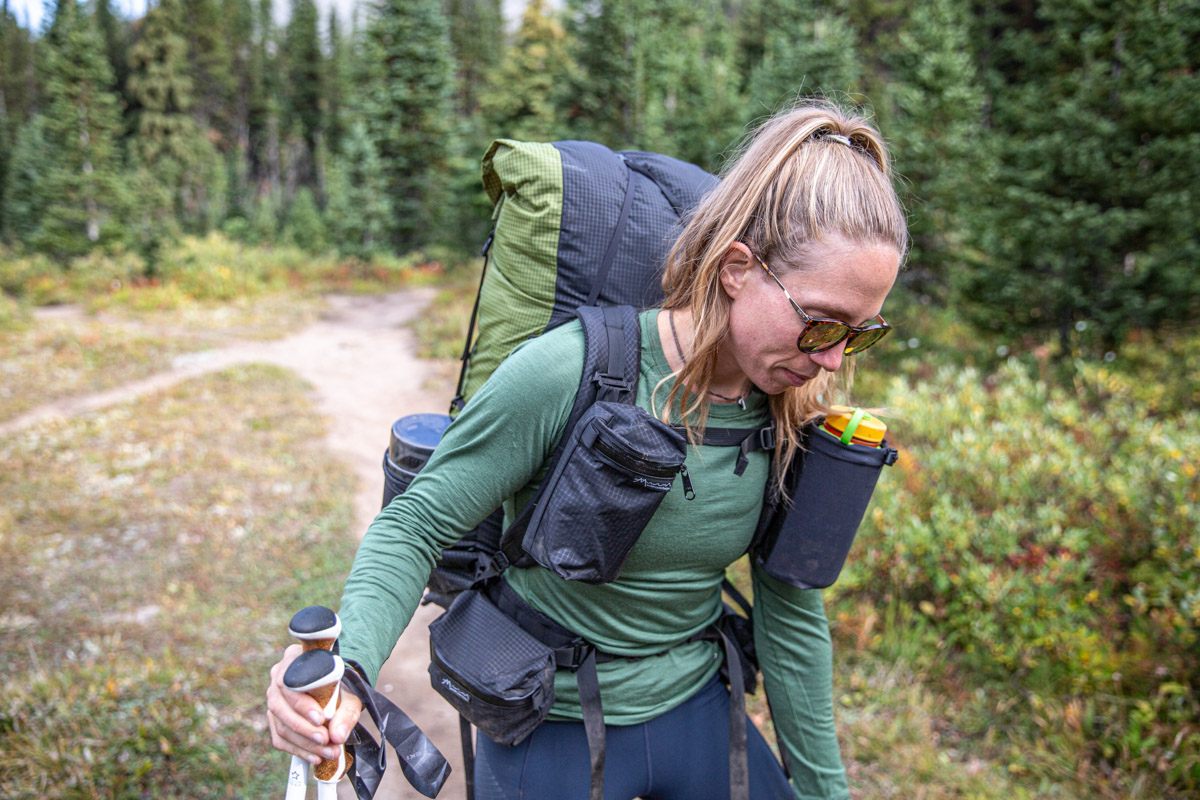

| Baselayer | Price | Materials | Category | Weight | g/m² |
|---|---|---|---|---|---|
| Smartwool Classic All-Season | $90 | 88% merino wool, 12% nylon | Lightweight | 150 | 4.5 oz. |
| Smartwool Thermal 1/4 Zip | $120 | 100% merino wool | Midweight | 250 | 8.3 oz. |
| Smartwool Intraknit Thermal | $130 | 53% merino, 45% polyester, 2% elastane | Midweight | 250 | 6.4 oz. |
| Helly Hansen Lifa LS | $45 | 100% polypropylene | Lightweight | 125 | 4.2 oz. |
The Smartwool Classic All-Season is a versatile baselayer that’s great for everything from shoulder-season hiking to mid-winter running. That said, it’s certainly on the thinner end with a 150g/m² construction. For a significant boost in warmth, it’s worth considering Smartwool’s own Classic Thermal, which boasts an all-merino build that’s noticeably thicker (250g/m²) than the Classic All-Season. In my experience, the Classic Thermal is an excellent option for downhill skiing, snowshoeing, and casual winter days around town. However, it’s much more of a cold-weather piece than the Classic All-Season, and you’re paying more for less versatility. If you’re looking for a year-round baselayer, I’d go with the Classic All-Season—you can always add more layers when the mercury drops.
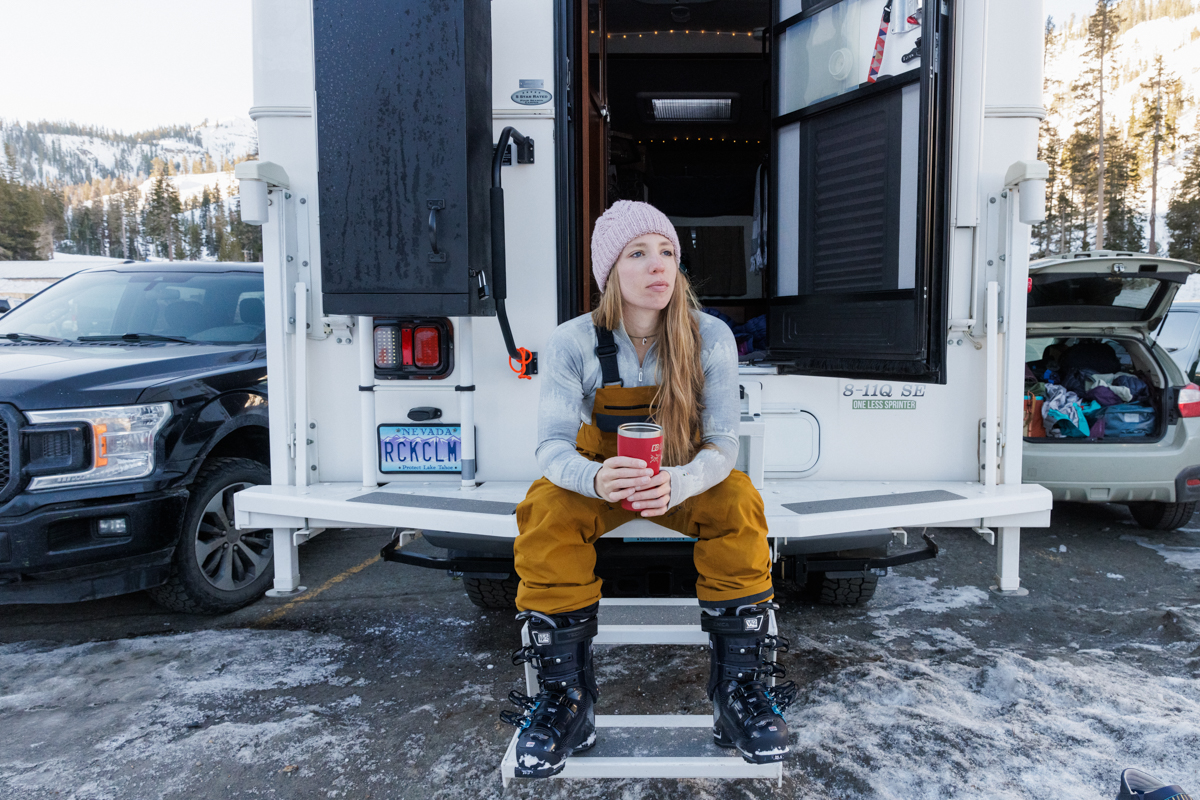
Next up is another Smartwool offering: the Intraknit Thermal Merino Base Layer Crew. In this case, the Intraknit is made with 52% merino, 45% polyester, and 2% elastane. Combined with mesh ventilation zones in sweat-prone areas like the upper back and core, the Intraknit stands out as an excellent companion for heart-pumping activities in cool to cold weather. However, despite being a much better breather than the Classic Thermal covered above, it’s still too warm for most shoulder-season outings, making the Classic All-Season the most versatile choice. If you spend a lot of time exerting in cold weather, however, the Intraknit Thermal is hard to beat.
Finally, if you’re willing to sacrifice the benefits of merino wool, Helly Hansen’s Lifa Long-Sleeve Crew is an excellent budget option. Like the Classic All-Season, the Lifa has a noticeably thin (125g/m²) construction that’s lightweight, highly breathable, and wicks sweat to an impressive degree. It’s also soft against the skin, slides smoothly underneath midlayers, and does a decent job blocking wind—all while costing around half as much as the Classic All-Season. That said, the fit is noticeably snug, and the all-synthetic build can’t match merino wool when it comes to next-to-skin comfort or odor resistance. In the end, I think the Classic All-Season has wider appeal that many will find worth the bump in price, but the Lifa is a surprisingly capable option for a lot less.
Back to the Smartwool Classic All-Season Review See our Baselayers Guide